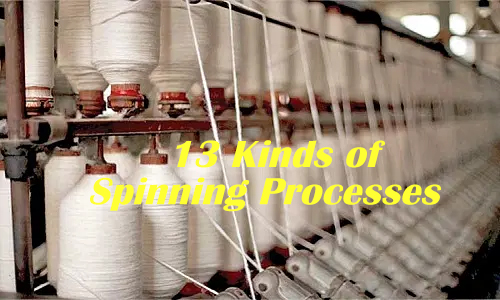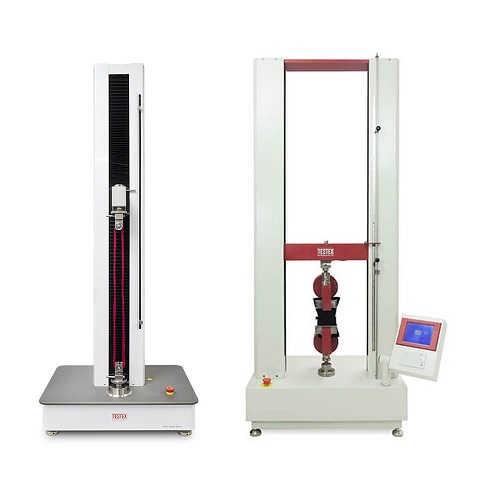The properties of textile fibers refer to the physical, chemical, and structural properties of fiber materials.…
What Is Yarn Count In Textile?
In all the different branches of the textile industry, it has been found necessary to adopt some method of numbering the different sizes of yarn; this invariable custom is practiced partly in order that yarns of different thicknesses may be distinguished from each other, and partly for the important and essential function of facilitating calculations when the weight has to be taken into account in the process of manufacture.
Yarn count is an important index to distinguish different yarns. Yarn count is the degree of yarn thickness, which can be expressed by means of S, D, N, Tex, Dtex and so on. S and D are more commonly used, while specific fabrics use specific specifications, for example, the Tex. is commonly used in scientific literature.
Table of Contents
Yarn Count Unit
S is the British count. It refers to that how many 840 yards of the yarn’s length, which is what the number of yarns counts with a pound yarn under the public moisture regain. The thicker the yarn, the smaller the S value of the yarn, for example, the 40S yarn is thinner than the 20S yarn.
D is the abbreviation of Denier, the expression of the fineness of the chemical fiber. It means that the weight grams of a 9000- meter long wire at a public moisture regain. The larger the D value, the thicker the yarn is, for example, 75D is thicker than 50D.
Tex, also known as “number”, referred to as special, old known as a public branch. It refers to the number of grams of the weight of a 1000 meter long yarn at a public moisture regain.
Tex, short for T. It refers to the grams weight number of a 1000 meter long yarn at a public moisture regain.
N is the metric branch. It refers to that how many one meters of the yarn’s length, which is what the number of yarns counts with one gram under the public moisture regain. For example, one gram weight yarn length is 200 meters long, the fineness of the yarn count is 200.
Dtex, it refers to the grams number of fiber bundles that has 10000 meters long.
The following are the interconversion formulas for several units:
D=5315/S, D=9000/N, Tex=D/9, 1Tex=1/10Dtex, Tex=1000/N, Dtex=10D/9, Dtex=10000/N
The Significance of Yarn Count
Although there are many different methods or systems of indicating the number, size, grist, or count of yarn concerning the relationships between its length and its weight, all these systems (yarn count system in textile) are modifications of two distinct groups:
1 That in which a given length is constant for any particular system, and the weight of this length is variable.
2 That in which the length is variable and the weight constant for any particular system.
The choice (if the length in Group I. or the weight in Group II. is quite arbitrary, and, indeed, there are many variations in both groups. For the sake of distinguishing between the two distinct groups you can adopt the following definition :
Group I. = fixed-length systems.
Group II. = fixed-weight systems.
In all the fixed-length systems the number or count of the yarn is directly proportional to the sectional area of the yarn; whereas in the fixed-weight systems the number or count of the yarn is inversely pro portional to the sectional area of the yam. In other words, you can have:
Fixed-length systems: the thicker the yarn, the higher the count.
Fixed-weight systems: the thicker the yarn, the lower the count.
Interpretation of Yarn Count
The count is the standard of yarn thickness. The higher the yarn count, the finer the yarn, and the thinner the cloth, the softer and more comfortable it is. But the high count of cloth requires high quality of raw materials and high requirements for yarn mills and textile weaving mills, so the cost of cloth is high.
In the industry, the cloth is largely non-counted and is mainly expressed by the density of yarns (the density of yarns refers to the roots number of warp and weft yarns arranged in square inches, also known as warp and weft densities). Generally expressed by “Warp yarns number * Weft yarns number”. For example 110*90, it means that there are 110 warps and 90 weft yarns per square inch.
Misunderstanding of Yarn Count
Myth one: The more counts the better, the higher the counts, the thicker the cloth, the higher the density. Not necessarily, it is better for the higher count under the same density, but the lower the count, the thicker the yarn, the thicker the cloth.
Myth two: The cloth is poor with 30s and 40s. This is not the case, you know, over 95% of the big brands(such as Loray) are 30s or 40s, it can be said that the majority of the supplies we see now are 30s or 40s.
Myth three: Excessive pursuit of high numbers and high density. At present, most of the cloth products in the market are 40s, if you listen to which business said they are 60s cotton, or even 80s, but be careful. Because the more the count, the more delicate the cloth color, and the more dense the cloth, the price will be very expensive, if the cloth with 80s washed, it is difficult to soak, because too dense.
How to measure yarn count? Through this article, I think you’ve got the information you need. If you want to know more, please pay attention to us. As a professional supplier of textile instruments, we are committed to continually improve the user experience, TESTEX Textile Testing Equipment is a reliable choice for testing textile quality.
This Post Has 8 Comments
Leave a Reply
You must be logged in to post a comment.




Very couple of web sites that come about to be detailed below, from our point of view are undoubtedly effectively worth checking out.
Thanks again for the article. Keep writing.
Im grateful for the blog.Much thanks again. Will read on…
I value the post.Thanks Again. Really Great.
Im grateful for the article. Cool.
Really appreciate you sharing this blog.Thanks Again. Really Cool.
Very handful of web sites that occur to be comprehensive beneath, from our point of view are undoubtedly nicely really worth checking out.
“Very good blog post. I definitely love this site. Stick with it!”